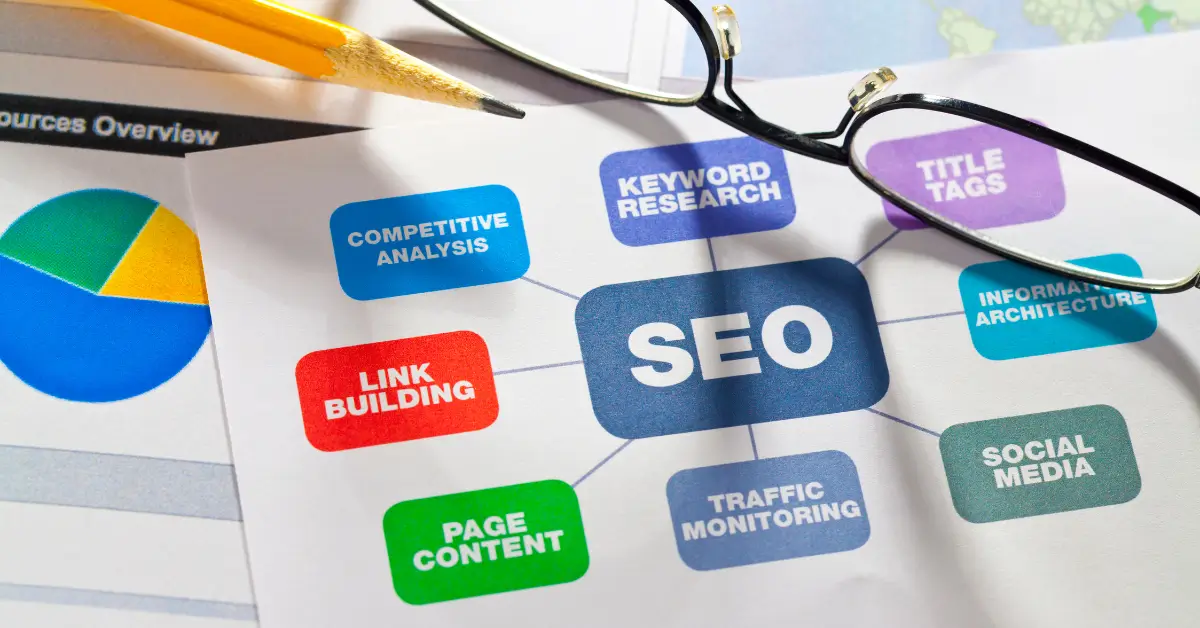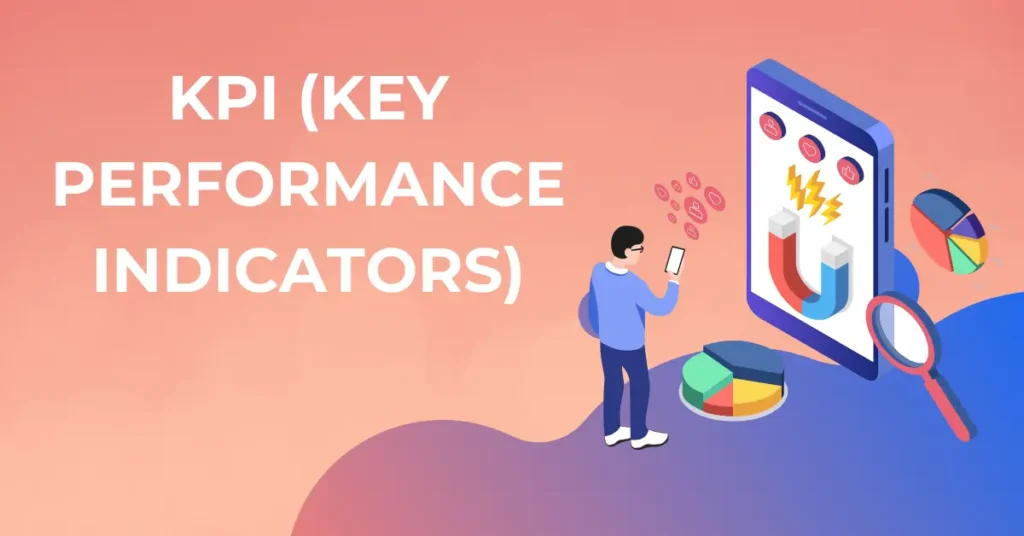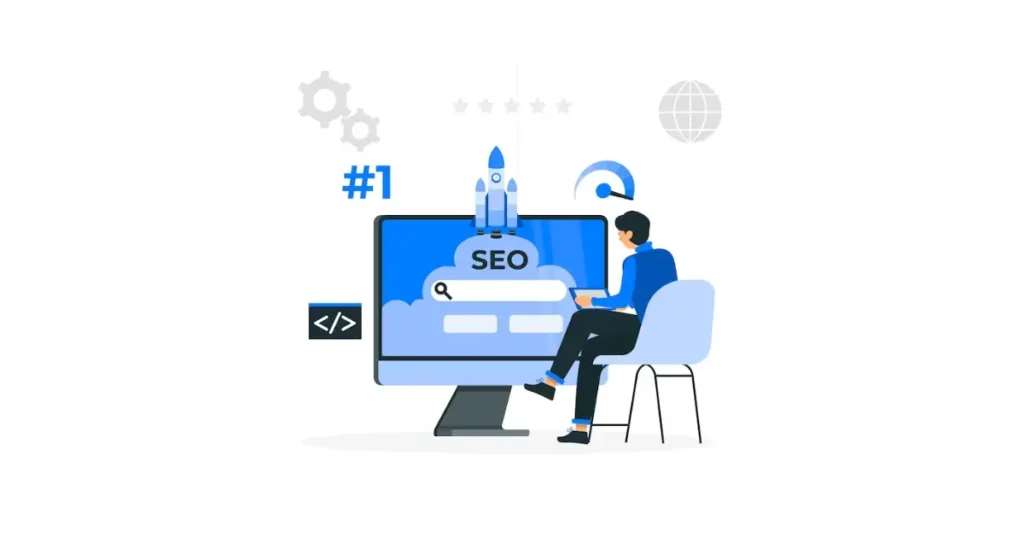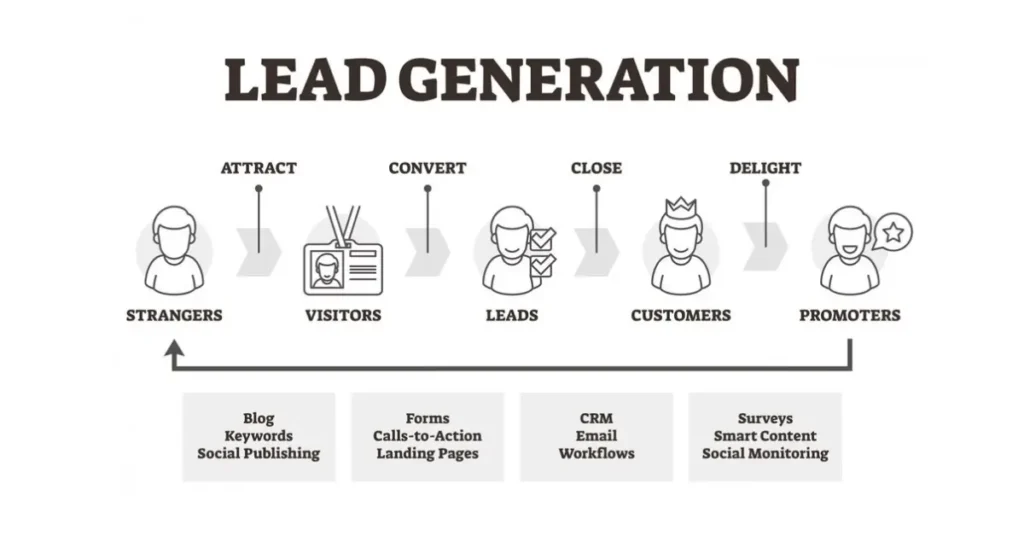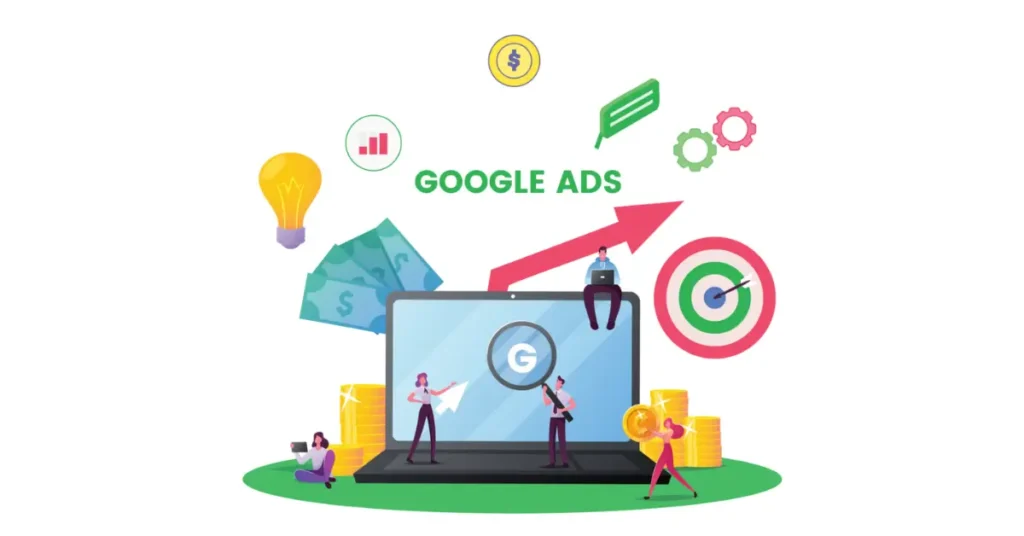SEO, or search engine optimization, is a process that aims to improve a website’s visibility in search engine results pages (SERPs). By optimizing a website and its content, businesses can increase their organic search traffic and attract relevant users who are actively searching for their products or services. SEO is not a one-time effort but a continuous process that requires time, effort, and strategic planning. In this article, we will explore the key concepts and strategies behind SEO and how it works to drive organic traffic and improve online visibility.
Introduction to SEO
SEO, short for search engine optimization, is the practice of improving a website’s visibility in search engine results pages. When users search for specific products or services, search engines like Google aim to deliver the most relevant and useful results. SEO helps businesses optimize their websites and content to increase their chances of appearing in these search results.
The primary goal of SEO is to drive organic traffic to a website. Organic traffic refers to the users who find a website through unpaid search results, as opposed to paid advertising. By optimizing a website, businesses can improve their rankings in search engine results, attract relevant users, and increase their online visibility.
How Search Engines Work
To understand how SEO works, it’s important to have a basic understanding of how search engines operate. Search engines use bots, also known as crawlers or spiders, to discover, crawl, and index web pages. These bots follow links from one page to another, collecting information and storing it in a database known as an index.
When a user enters a search query, the search engine analyzes its index and determines the most relevant results to display. The search engine’s algorithm plays a crucial role in this process, evaluating various factors to determine the order in which the results should appear on the search engine results pages (SERPs).
The Importance of SEO
SEO is essential for businesses looking to increase their online visibility and attract relevant traffic to their websites. Here are a few reasons why SEO is important:
- Increased Organic Traffic: By implementing SEO strategies, businesses can improve their rankings in search engine results, leading to increased organic traffic. Organic traffic consists of users who actively search for specific topics, products, or services, making them more likely to engage with a website’s content.
- Brand Awareness and Credibility: Websites that rank higher in search engine results are often perceived as more credible and trustworthy. Being visible on the first page of search results can enhance a business’s brand awareness and reputation.
- Competitive Advantage: With effective SEO, businesses can outperform their competitors and gain a competitive edge. Ranking higher in search results can lead to more visibility, traffic, and conversions, giving businesses an advantage in the online marketplace.
- Targeted Audience Reach: SEO allows businesses to attract users who are actively searching for their products or services. By optimizing their websites for specific keywords and topics, businesses can reach a targeted audience and increase the chances of converting them into customers.
- Long-Term Results: While SEO requires ongoing effort and time, the results can be long-lasting. Unlike paid advertising, which stops generating traffic once the budget is exhausted, SEO can provide a sustainable source of organic traffic over time.
SEO vs. PPC
Search engine results pages (SERPs) typically consist of two types of results: paid results and organic results. Paid results, also known as pay-per-click (PPC) advertising, are ads that businesses pay for to appear at the top of the search results. Organic results, on the other hand, are websites that appear in the search results based on their relevance and quality, without paying for placement.
While PPC can provide immediate visibility and traffic, SEO focuses on organic search results and long-term strategies. PPC can be costly, especially for competitive keywords, and the traffic generated from paid ads stops once the budget runs out. SEO, on the other hand, aims to improve a website’s visibility organically, without the need for ongoing advertising expenses.
Both SEO and PPC have their advantages and can complement each other in a comprehensive digital marketing strategy. However, SEO is often considered a more sustainable and cost-effective approach for long-term success.
The SEO Process
The SEO process involves various strategies and techniques to improve a website’s visibility in search engine results. It can be categorized into four main areas: keyword research, on-page optimization, off-page optimization, and technical optimization. Let’s explore each of these areas in more detail.
Keyword Research
Keyword research is a crucial step in the SEO process. It involves identifying the keywords and phrases that users are likely to search for when looking for products or services related to a business. By understanding the target audience’s search behavior, businesses can optimize their websites and content to align with these keywords.
There are several tools available for keyword research, such as Semrush, Google Keyword Planner, and Ahrefs. These tools provide insights into search volume, keyword competition, and related keywords, helping businesses make informed decisions about which keywords to target.
During the keyword research process, businesses should consider the relevance, search volume, and competition of each keyword. It’s important to choose keywords that are relevant to the business and have a reasonable search volume, while also considering the level of competition for each keyword.
On-Page Optimization
On-page optimization involves optimizing the content and structure of individual web pages to improve their visibility in search engine results. This includes optimizing page titles, meta descriptions, headings, URLs, and the overall content on each page.
When optimizing page titles, businesses should include relevant keywords that accurately describe the content of the page. Meta descriptions, which appear as snippets in search results, should be concise, compelling, and include relevant keywords. Headings should be properly structured using HTML tags (H1, H2, etc.) and should also include relevant keywords.
URLs should be clean, descriptive, and include relevant keywords. The content on each page should be high-quality, informative, and engaging, incorporating relevant keywords naturally throughout the text. Businesses should also optimize images by using descriptive alt text and optimizing file sizes for faster page loading times.
Internal linking is another important aspect of on-page optimization. By linking relevant pages within a website, businesses can improve navigation and help search engines understand the structure and hierarchy of the site.
Off-Page Optimization
Off-page optimization refers to the actions taken outside of a website to improve its visibility and credibility. The primary focus of off-page optimization is to build high-quality backlinks, which are links from other websites that point to a business’s website. Backlinks are important ranking factors for search engines, as they indicate the authority and trustworthiness of a website.
There are various strategies for building backlinks, including guest blogging, influencer outreach, content promotion, and social media marketing. Businesses should focus on earning backlinks from reputable and relevant websites, as quality is more important than quantity when it comes to backlinks.
Other off-page optimization techniques include online reputation management, social bookmarking, and directory submissions. These activities help increase a website’s visibility and reputation outside of the website itself.
Technical Optimization
Technical optimization focuses on ensuring that a website is properly structured, crawlable, and indexable by search engine bots. This includes optimizing website speed, mobile-friendliness, site architecture, URL structure, XML sitemaps, robots.txt files, and more.
Websites should load quickly to provide a positive user experience and improve search engine rankings. Mobile-friendliness is also crucial, as an increasing number of users access the internet through mobile devices. Websites should be responsive and provide a seamless experience across desktop and mobile devices.
Site architecture plays a role in how search engine bots crawl and understand a website. It’s important to have a logical and organized structure, with clear navigation and internal linking. XML sitemaps help search engines understand the structure of a website and index its pages more effectively. Robots.txt files provide instructions to search engine bots on which pages to crawl and index.
Technical optimization also involves optimizing the website’s code, ensuring clean and efficient HTML, CSS, and JavaScript. Websites should be accessible to users with disabilities, following web accessibility guidelines.
Understanding Search Engine Algorithms
Search engine algorithms play a crucial role in determining the order in which websites appear in search engine results. While the exact algorithms used by search engines like Google are closely guarded secrets, there are several factors that algorithms evaluate for search engine optimization.
Relevance of Webpages
One of the key factors search engine algorithms evaluate is the relevance of webpages to a user’s search query. Algorithms analyze webpage content to determine if it contains information that is relevant to what the user is looking for. This includes analyzing keywords, synonyms, and related terms to understand the context and intent of the search query.
Search engines also consider factors such as the presence of keywords in the body copy, headings, and other on-page elements. However, relevance goes beyond keyword matching. Search engines use aggregated interaction data, such as click-through rates and time spent on page, to determine if the page is relevant to the search query.
Quality of Content
Search engines aim to prioritize high-quality and reliable sources of information. Algorithms evaluate the expertise, authoritativeness, and trustworthiness (E-A-T) of webpages to determine their quality. This involves assessing the credibility of the content, the reputation of the website and its authors, and the overall user experience provided by the website.
Websites that provide accurate, well-researched, and trustworthy information are more likely to rank higher in search results. User-generated content, such as reviews and ratings, can also influence the perceived quality of a website.
Usability of Webpages
The usability of webpages plays an important role in search engine rankings. Search engines evaluate factors such as website speed, mobile-friendliness, and overall user experience to determine the usability of a website.
Website speed is crucial, as slow-loading pages can lead to a poor user experience. Mobile-friendliness is also essential, as more users access the internet through mobile devices. Websites should be responsive and provide a seamless experience across different screen sizes.
Other usability factors include website design, navigation, and accessibility. A well-designed and easy-to-navigate website is more likely to rank higher in search results.
Context and Settings
Search engines consider various contextual factors and user settings to provide the most relevant results. Location and language settings, for example, can influence the search results displayed to a user. Search engines may deliver location-specific results, providing content that is relevant to the user’s geographic location.
User search history and preferences can also influence the search results displayed. Search engines use this information to personalize the search results and provide content that is most useful to the user at a given moment.
Benefits of SEO
Implementing effective SEO strategies can provide numerous benefits for businesses. Let’s explore some of the key advantages of SEO:
Builds Trust and Credibility
Websites that rank high in search engine results are often perceived as more trustworthy and credible. Users tend to trust the websites that appear on the first page of search results, as these results are seen as the most relevant and reliable. By implementing SEO strategies, businesses can build trust and credibility with their target audience.
To build trust and credibility, websites should provide high-quality content, accurate information, and a positive user experience. By consistently delivering value to users, businesses can establish themselves as trusted authorities in their respective industries.
Provides a Competitive Advantage
In today’s competitive online landscape, having a strong SEO strategy can provide a significant competitive advantage. Businesses that invest in SEO and rank higher in search results are more likely to attract organic traffic and gain a larger share of the market.
By outranking competitors in search results, businesses can increase their visibility, attract more users, and generate more leads or sales. SEO allows businesses to stand out from the competition and establish themselves as industry leaders.
Reaches More People
SEO enables businesses to reach a wider audience by attracting users who are actively searching for their products or services. By targeting specific keywords and optimizing their content, businesses can ensure that their website appears in relevant search results.
By creating valuable content and optimizing it for specific keywords, businesses can attract users at different stages of the customer journey. From informational queries to transactional queries, SEO helps businesses connect with users at every step and increase their chances of conversion.
Supports Content Marketing
SEO and content marketing go hand in hand. Content marketing involves creating and distributing valuable, relevant, and informative content to attract and engage a target audience. SEO helps businesses optimize their content and ensure that it reaches the right audience.
By conducting keyword research and incorporating relevant keywords into their content, businesses can improve their chances of ranking higher in search results. SEO supports content marketing efforts by increasing the visibility and discoverability of content, driving organic traffic, and increasing brand awareness.
Ranks Better in Local Searches
For businesses with a local presence, SEO can help improve their visibility in local searches. Local SEO focuses on optimizing a website for location-specific keywords and targeting users in a specific geographic area.
By creating a Google My Business account and optimizing the listing for local searches, businesses can increase their chances of appearing in local search results. This is particularly important for businesses that rely on local customers, such as restaurants, retail stores, or service providers.
Understands the Web Environment
Staying up to date with SEO practices and trends allows businesses to better understand the ever-changing web environment. SEO professionals need to keep up with search engine algorithm updates, industry news, and best practices to effectively optimize websites and content.
By staying informed about SEO, businesses can make more informed decisions and adapt their strategies accordingly. Understanding how search engines work and how users interact with search results can provide valuable insights for improving online visibility and driving organic traffic.
Relatively Inexpensive
Compared to other digital marketing channels, SEO can be a relatively inexpensive strategy for businesses. While there may be costs associated with hiring SEO professionals or investing in SEO tools, the long-term benefits can outweigh the initial investment.
Unlike paid advertising, which requires ongoing budget allocation, SEO focuses on organic traffic and rankings. Once a website starts ranking higher in search results, it can continue to attract organic traffic without the need for additional advertising expenses.
Provides Quantifiable Results
SEO efforts can be measured and evaluated using various tools and analytics data. Google Analytics, for example, provides comprehensive data on organic traffic, user engagement, and conversions. By analyzing this data, businesses can gain insights into the effectiveness of their SEO strategies and make data-driven decisions.
Data from analytics tools can be cross-referenced with intended actions taken by users to determine the impact of SEO on customer engagement and acquisition. This allows businesses to track the ROI of their SEO efforts and make adjustments as needed.
SEO Techniques
Implementing effective SEO strategies involves a combination of technical optimization, on-page optimization, and off-page optimization. Let’s explore some key techniques for each of these areas:
Technical Optimization
Technical optimization focuses on ensuring that a website is properly structured and accessible to search engines. Some key technical optimization techniques include:
- Optimizing website speed: Improving page load times and overall website performance.
- Mobile-friendliness: Ensuring that a website is optimized for mobile devices and provides a seamless user experience across different screen sizes.
- Site architecture: Designing a logical and organized structure for a website that facilitates easy navigation and helps search engines understand the hierarchy of pages.
- URL structure: Creating clean and descriptive URLs that include relevant keywords.
- XML sitemaps: Providing search engines with a structured map of a website’s pages for better crawling and indexing.
- Robots.txt files: Instructing search engine bots on which pages to crawl and index.
On-Page Optimization
On-page optimization involves optimizing the content and structure of individual web pages. Some key on-page optimization techniques include:
- Keyword research and selection: Identifying relevant keywords with high search volume and optimizing content around those keywords.
- Creating quality content: Developing informative, engaging, and unique content that provides value to users.
- Page titles and meta descriptions: Including relevant keywords in page titles and meta descriptions to improve click-through rates in search results.
- Internal linking: Linking relevant pages within a website to improve navigation and help search engines understand the website’s structure.
- Alt text for images: Using descriptive alt text to help search engines understand the content of images and improve accessibility.
- URL slugs: Creating clean and keyword-rich URLs that accurately describe the content of a page.
Off-Page Optimization
Off-page optimization focuses on building the authority and credibility of a website through external factors. Some key off-page optimization techniques include:
- Building high-quality backlinks: Earning links from reputable and relevant websites that point to a business’s website.
- Guest blogging: Writing guest posts for other websites to build backlinks and increase visibility.
- Influencer outreach: Partnering with influencers or industry experts to promote content and gain exposure.
- Content promotion: Sharing content through social media, email marketing, and other channels to attract attention and generate backlinks.
- Social media marketing: Leveraging social media platforms to engage with the target audience and generate buzz around a business or website.
SEO Tools
There are numerous tools available to assist businesses in optimizing their websites and measuring the effectiveness of their SEO efforts. Some popular SEO tools include:
- Semrush: A comprehensive SEO tool that offers keyword research, competitor analysis, and performance tracking.
- Google Analytics and Search Console: Google’s free tools that provide insights into website traffic, user behavior, and search performance.
- Yoast SEO: A plugin for WordPress websites that helps optimize on-page SEO elements and provides real-time suggestions for improvement.
- Ahrefs: A powerful SEO tool that offers backlink analysis, keyword research, and competitor analysis.
- SpyFu: A competitor analysis tool that provides insights into competitors’ SEO and pay-per-click strategies.
- HubSpot Website Grader: A free tool that analyzes a website’s performance, SEO, and security.
- Google Trends: A tool that helps identify trending topics and keywords to inform content creation and optimization.
- Bing Webmaster: Bing’s webmaster tools that provide insights into website performance and search engine visibility.
- Consultants: SEO professionals who can provide expertise and guidance in implementing effective SEO strategies.
Using these tools, businesses can gain valuable insights, track performance, and optimize their websites for better search engine rankings.
Conclusion
SEO is a crucial marketing activity that helps businesses increase their online visibility and attract relevant organic traffic. By implementing effective SEO strategies, businesses can improve their rankings in search engine results, build trust and credibility, reach a wider audience, and gain a competitive advantage.
The SEO process involves various techniques, including keyword research, on-page optimization, off-page optimization, and technical optimization. By conducting keyword research, creating quality content, optimizing on-page elements, building high-quality backlinks, and ensuring technical excellence, businesses can improve their chances of ranking higher in search results.
SEO tools provide valuable insights and analytics data to measure the effectiveness of SEO efforts and make data-driven decisions. By leveraging these tools, businesses can track the performance of their websites, identify areas for improvement, and optimize their SEO strategies accordingly.

